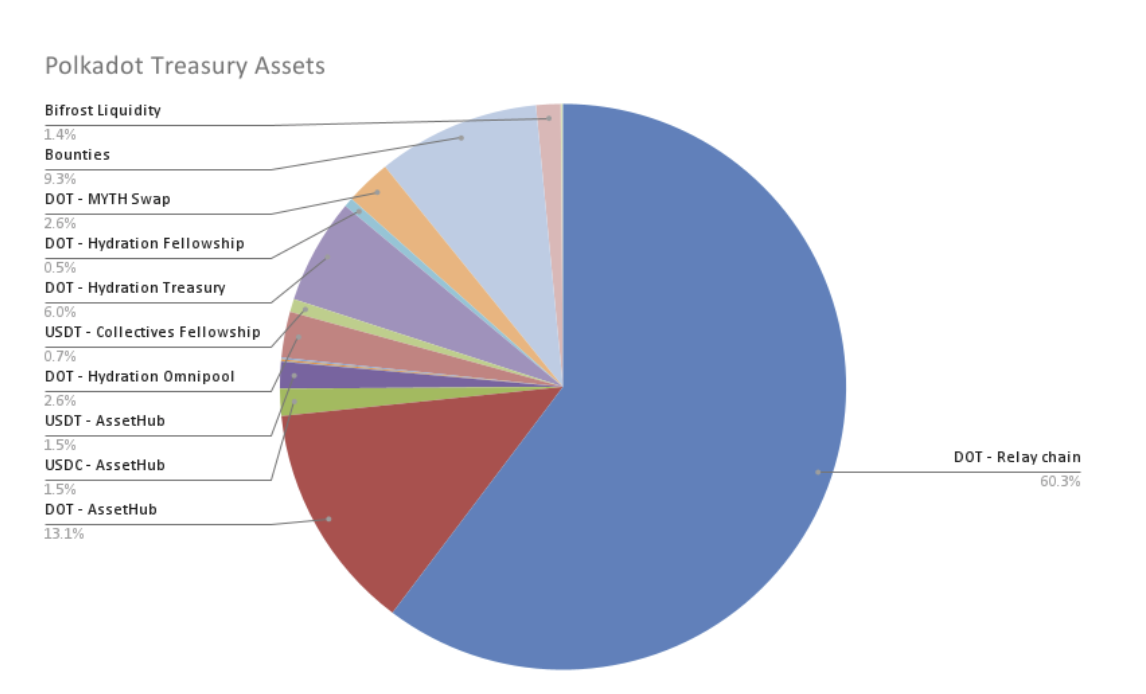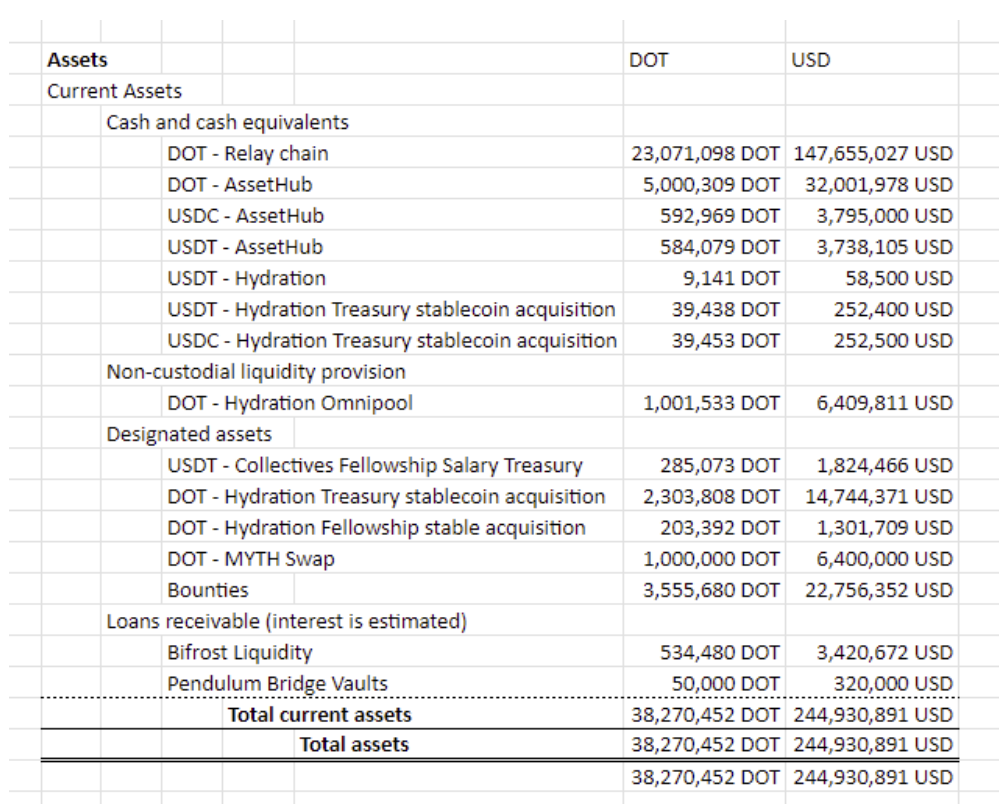Kho bạc Polkadot hiện đang nắm giữ tài sản tương đương 38 triệu DOT, trị giá khoảng 245 triệu đô la. Đại sứ Tommi Enenkel, được biết đến là alice_und_bob, đã chia sẻ một báo cáo mới cung cấp thông tin cập nhật mới nhất về kho bạc của mạng lưới.

Tài sản kho bạc Polkadot (tỷ lệ phần trăm). Nguồn: forum.polkadot.network
Số dư này có nghĩa là mạng chỉ có thể duy trì hoạt động trong khoảng hai năm với mức chi tiêu hiện tại. Báo cáo nêu rõ:
/* custom css – generated by TagDiv Composer */
/* custom css – generated by TagDiv Composer */
“Với tốc độ chi tiêu hiện tại, Kho bạc chỉ có thể duy trì hoạt động trong khoảng hai năm mặc dù bản chất bất ổn của trái phiếu kho bạc được định giá bằng tiền điện tử khiến việc dự đoán một cách chắc chắn trở nên khó khăn.”

Tài sản kho bạc Polkadot (USD). Nguồn: forum.polkadot.network
Trong sáu tháng đầu năm nay, Polkadot đã đầu tư mạnh vào hệ sinh thái của mình, chi 11 triệu DOT, trị giá khoảng 87 triệu đô la, cho nhiều dự án khác nhau.
Theo báo cáo, mạng lưới đã đầu tư khoảng 37 triệu đô la vào các hoạt động Tiếp cận cộng đồng như quảng cáo, tài trợ và sự kiện. Mạng lưới đã ký hợp đồng tài trợ với tay đua Conor Daly và cũng thúc đẩy một số hoạt động marketing được thiết kế để thúc đẩy việc cộng đồng toàn cầu rộng lớn hơn áp dụng mạng lưới.
Polkadot cũng đã chi 23 triệu đô la để phát triển các tính năng và nâng cấp mạng lưới, bao gồm SDK, Dịch vụ dữ liệu và lập chỉ mục, Quản trị và Subwallet.
Hơn nữa, mạng lưới đã đầu tư 15 triệu đô la vào các ưu đãi thanh khoản và 5,5 triệu đô la vào Tài năng và Giáo dục. Ngoài ra, mạng lưới đã chi 3,8 triệu đô la để duy trì mạng lưới và các thành phần hệ sinh thái cốt lõi, và 2,1 triệu đô la khác dành cho Nghiên cứu.
Doanh thu giảm
Báo cáo nhấn mạnh sự sụt giảm doanh thu của Polkadot. Trong sáu tháng đầu năm, tổng thu nhập của mạng lưới đã giảm từ 414.291 DOT được ghi nhận trong nửa cuối năm 2023 xuống còn 171.696 DOT.
Báo cáo thu nhập Polkadot. Nguồn: forum.polkadot.network
Enenkel cho rằng sự sụt giảm này là do phí mạng lưới giảm đáng kể, từ 313.443 DOT năm ngoái xuống còn 39.444 DOT trong nửa đầu năm 2024:
“Chúng tôi thấy rằng doanh thu trực tiếp từ phí vẫn còn ở mức thấp. Polkadot đã kiếm được 300.000 DOT từ phí trong nửa cuối năm 2023 từ một chiến dịch đăng ký ngắn hạn. Phí trong điều kiện thông thường khá ổn định với khoảng 20.000 DOT mỗi quý. Các nguồn doanh thu khác thường là chuyển khoản từ các tài khoản hoàn lại tiền mà họ đã nhận và hoàn lại vì nhiều lý do khác nhau.”
Annie
Theo Cryptoslate
/* custom css – generated by TagDiv Composer */
/* custom css – generated by TagDiv Composer */
